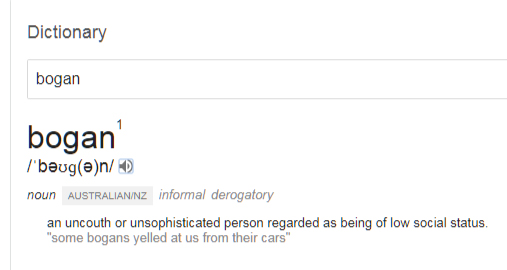Search This Blog
"Truth comes only to conquer those who have lost the art of receiving it as a friend." ~ Ravi Thakur
Featured
- Get link
- X
- Other Apps
Hidaya: Everything You Need to Know About the First Tropical Cyclone to Make Landfall in Kenya
In the wake of devastating floods and a looming cyclone, Kenya finds itself at the mercy of nature's wrath. The unfolding crisis paints a grim picture of the urgent need for climate change mitigation and awareness. Let's delve into the depths of Cyclone Hidaya and its profound implications for Kenya.
Background and Historical Context
Kenya, known for its diverse landscapes and vibrant culture, is facing an unprecedented challenge – the impending arrival of Cyclone Hidaya. The recent torrential rains and flooding, claiming over 210 lives and wreaking havoc on infrastructure, can only serve as a prelude to the looming tropical cyclone. These events underscore the vulnerability of Kenya to extreme weather phenomena exacerbated by climate change. It doesn't help one bit that President Ruto is on record dismissing and trivialising the extreme weather conditions that have been encircling the country for the last six months or so.
#KenyaFloods
— 𝕵𝖆𝖛𝖆𝖓 𝕺𝖓𝖌𝖚𝖗𝖚™ 🇰🇪 🇺🇬 🇹🇿 (@OnguruMeister) May 1, 2024
For the uninitiated, Peninah Malonza, bungling CS, is here referring to the El Nino that William Ruto, President, denied and dismissed offhand during that same November that she's talking about. Lakini mungu ni nani?? 🤷🏿♂️
As you were...#LabourDay pic.twitter.com/KGLTdZMnI1
What We Know So Far
Cyclone Hidaya, christened by Meteo France La Reunion, is poised to make landfall in Kenya's southern neighbour, Tanzania, before potentially impacting Kenya's coastal regions. With winds reaching up to 165 kph (100 mph) and waves towering at nearly eight metres (26 feet), the cyclone poses a grave threat to coastal communities. The trajectory of Hidaya indicates a path fraught with peril, with forecasts predicting heavy rainfall, strong winds, and dangerous waves.
President Ruto has positioned himself as Africa's climate champion, boldly advocating for green growth, carbon markets, and ambitious tree-planting initiatives. However, beneath the veneer of his environmental commitment lies a web of contradictions and self-serving actions...
— Kamau Crypto (@kamaucrypto) November 13, 2023
🧵 pic.twitter.com/kkawjYFp7a
The Urgency of Climate Action in the Face of Cyclone Hidaya
As Kenya braces for the onslaught of Cyclone Hidaya, it confronts a multifaceted crisis that demands immediate attention. The devastating floods and the impending cyclone underscore the urgent need for comprehensive disaster preparedness and climate change adaptation measures. The lack of timely response and preparedness by authorities raises questions about Kenya's resilience in the face of escalating climate-related disasters.
Solutions: Mitigating Climate Change and Building Resilience
What we're witnessing since beginning of March is our long rainy season. Absolutely normal! IGAD warned us of looming disaster in February, but instead of action, some people around here chose to go collect Benny Hinn from America (on taxpayer money) to pray for a bloody husband! pic.twitter.com/3fK8vvkatL
— 𝕵𝖆𝖛𝖆𝖓 𝕺𝖓𝖌𝖚𝖗𝖚™ 🇰🇪 🇺🇬 🇹🇿 (@OnguruMeister) April 30, 2024
The arrival of Cyclone Hidaya serves as a wake-up call for Kenya to prioritise climate change mitigation and adaptation strategies. Building resilient infrastructure, implementing (but more importantly, heeding) early warning systems, and enhancing disaster preparedness are imperative steps to mitigate the impact of extreme weather events. Furthermore, raising awareness about climate change and fostering community resilience through education and advocacy are crucial in building a sustainable future for Kenya.
A Call to Action
As Kenya grapples with the aftermath of devastating floods and braces for Cyclone Hidaya, the imperative for climate action has never been clearer. The convergence of natural disasters underscores the urgent need for proactive measures to mitigate climate change and build resilience. It is incumbent upon policymakers, communities, and individuals to heed the warning signs and take decisive action to safeguard Kenya's future against the ravages of climate change.
Seems like Cyclone Hidaya ishaanza kule Mombasa.
— SHINSKI🔰 (@miondokoo) May 3, 2024
Hopefully it's not disastrous as it said.
Stay Safe⚠️ pic.twitter.com/HbwpbnHFsB
In the face of adversity, Kenya must rise to the challenge, uniting in solidarity to confront the climate crisis head-on. Together, we can weather the storm and pave the way towards a more sustainable and resilient future for generations to come.
- Get link
- X
- Other Apps
Popular Posts

The One On Why Uganda Produces Shitty Ads
- Get link
- X
- Other Apps

Of Australian Bogans Masquerading As Creatives In Nairobi Agencies
- Get link
- X
- Other Apps



Comments
Post a Comment